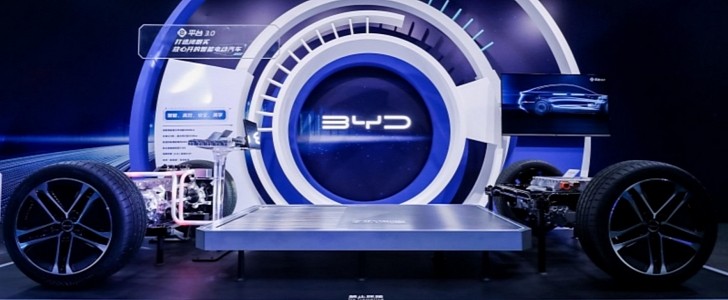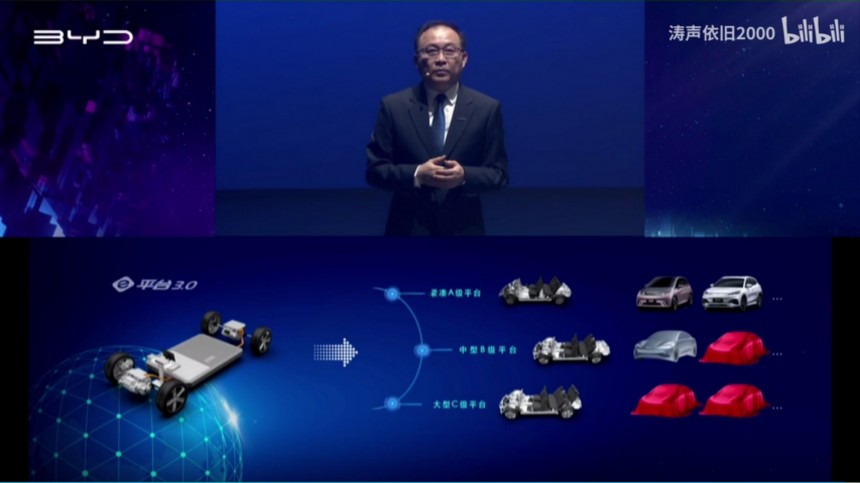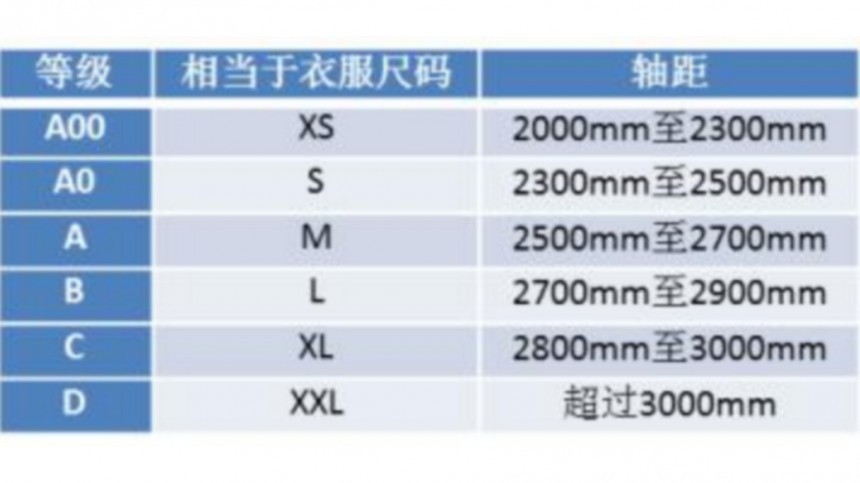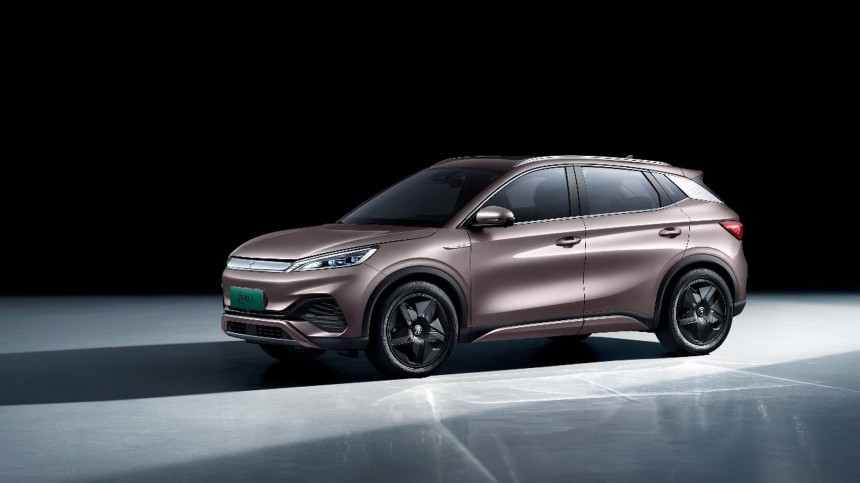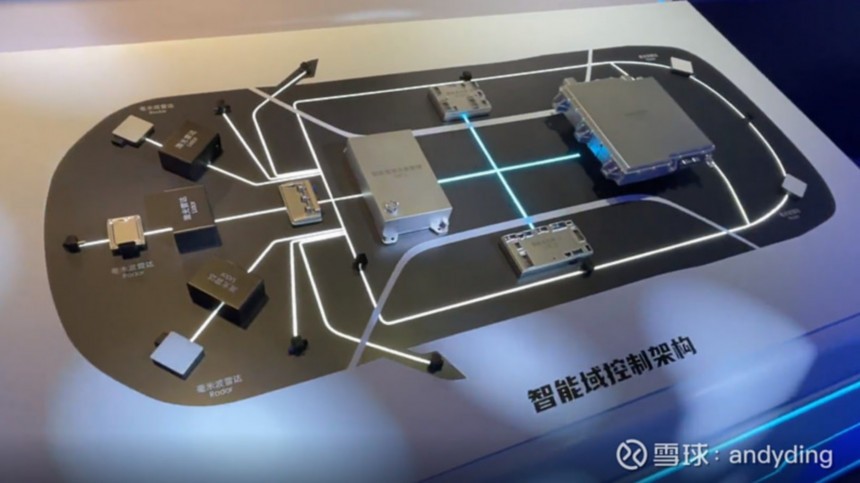In 2011, a Bloomberg reporter tried to talk to Elon Musk about BYD, and he started to laugh uncontrollably. He summed up the discussion with a question: “Have you seen their car?” Ten years later, we have no idea what Musk thinks about BYD. However, financial analysts now seem to agree with Warren Buffett that it is a wise investment. From Snow Bull Capital, Bridget McCarthy made a long thread on Twitter to share why the e-platform 3.0 proves that.
Among the many aspects the financial analyst brings up, perhaps the most important one is that BYD is not affected by the semiconductor crisis that is making automakers such as Volkswagen and Toyota cut production despite the demand for new cars. BYD would be the only vehicle manufacturer that makes its own chips. That’s verticalization at its best.
Finding its own solutions without relying on suppliers brought BYD other advantages. It also makes its own cells. In fact, the company has made LFP batteries very attractive with the Blade Battery. This CTP (cell-to-pack) solution turns the battery pack into a structural component that costs way less than those in most electric vehicles sold in Western countries. LFP would also be safer.
Unfortunately for BYD, one of their Han EVs spontaneously caught fire two days after a crash test. The company said it was caused by a conductive coolant that would not be the original one in BYD’s cars. The team that made the tests (“Understanding the Car Test Ground”) said they had not changed the vehicle. BYD is yet to provide a complete explanation about what happened.
According to McCarthy, BYD wants to produce two B-class (one of them the ocean-X) and two C-class vehicles over the e-platform 3.0. The Dolphin would be an A-class vehicle. That would also be the case for the Yuan Plus, a crossover presented at the Chengdu Auto Show 2021 on August 30. That means the company expects six of its vehicles to have the new architecture soon.
In terms of appearance, the Yuan Plus looks more like the Han than the Dolphin. The Yuan Plus is 4.46 meters (175.6 inches) long, 1.88 m (74 in) wide, 1.62 m (63.8 in) tall, and has a wheelbase of 2.72 m (107.1 in).
With the smaller Blade Battery option – with 50.12 kWh – it weighs 1,615 kilograms (3,560.5 pounds) and runs up to 430 km (267.2 mi) under the NEDC cycle. The long-range battery pack – with 60.48 kWh – is 75 kg (165.4 lb) heavier (1,690 kg, or 3,725.8 lb) and gives the Yuan Plus an NEDC range of 510 km (316.9 mi). Under the WLTP cycle, this derivative would travel only 380 km (236.1 mi).
We were not sure about what McCarthy meant by these classifications, so we got in touch with her to check. According to the car’s international categorization, the Dolphin would fit as a B-segment or even a C-segment vehicle due to its 2.70 meters (106.3 inches) wheelbase. The Yuan Plus would definitely belong to the C-segment.
The analyst was kind enough to take her time to show us the table above. It presents the Chinese classification for cars, in which A-class cars have wheelbases going from 2.50 m (98.4 in) up to 2.70 m (106.3 in). B-class vehicles go from 2.70 m (106.3 in) up to 2.90 m (114.2 in). Weirdly, C-class would be for vehicles with wheelbases from 2.80 m (110.2 in) up to 3 m (118.1 in). We wonder where a car with a 2.85 m (112.2 in) wheelbase would fit in...
Despite the controversy involving it, the Blade Battery would be just one of the advantages the e-platform 3.0 offers. Working with 800V allows the battery pack to recover 150 km (93.2 mi) of range in only 5 minutes. With enough fast chargers to cope with the charging speed required (at least 270 kW), that would favor EV adoption.
BYD’s cars build over the new architecture also have an 8-in-1 powertrain. McCarthy explained that the company managed to put the “motor, motor controller, reducer, onboard charger, DC converter, high-voltage distribution box, vehicle controller, and BMS” in a single unit. Lucid’s compact unit integrates the motor, the transmission, and the inverter – and that’s it. Make sure you check McCarthy’s tweet about that to see all eight parts decompose in the great gif she shared.
The analyst then mentions aspects we already talked about when we wrote about the ocean-X design study, such as the range, drag coefficient, efficient cooling and heating system, and so forth. With the information about the massive differences between the NEDC and WLTP ranges, it is possible that the 1,000-km (621-mi) claim uses the NEDC standard.
The new aspects McCarthy provided refer to the BYD OS and the domain controllers. The first would put BYD as the perfect supplier for other OEMs because the OS is not coupled with the hardware. In other words, anyone willing to use the e-platform 3.0 architecture could have it without the BYD OS or with it. Customer automakers may develop their own operating systems if so they wish.
The domain controllers are something we have already heard about with Volvo. Instead of having multiple ECUs in a vehicle controlling specific functions and having to communicate with each other, domain controllers centralize groups of duties. Volvo mentioned a core computing model when it mentioned NVIDIA and Google would be its partners in future vehicle developments.
Instead of three main computers Volvo cars will have, BYD will have four domain controllers. The company said they have helped it improve vehicle response efficiency by 50%. Compute power increase in 30% and, guess what, BYD manufactures the domain controllers as well.
We have already told you the first e-platform 3.0 vehicle from BYD would beat combustion-engined competitors with its price in China. If the company can make them competitive in foreign markets, it will sell every Dolphin it produces in a heartbeat. The Yuan Plus did not have its prices released so far, but we bet it would also be very competitive. Come on, BYD: what are you waiting to sell your cars to customers worldwide? We bet Musk will not laugh this time.
Finding its own solutions without relying on suppliers brought BYD other advantages. It also makes its own cells. In fact, the company has made LFP batteries very attractive with the Blade Battery. This CTP (cell-to-pack) solution turns the battery pack into a structural component that costs way less than those in most electric vehicles sold in Western countries. LFP would also be safer.
Unfortunately for BYD, one of their Han EVs spontaneously caught fire two days after a crash test. The company said it was caused by a conductive coolant that would not be the original one in BYD’s cars. The team that made the tests (“Understanding the Car Test Ground”) said they had not changed the vehicle. BYD is yet to provide a complete explanation about what happened.
In terms of appearance, the Yuan Plus looks more like the Han than the Dolphin. The Yuan Plus is 4.46 meters (175.6 inches) long, 1.88 m (74 in) wide, 1.62 m (63.8 in) tall, and has a wheelbase of 2.72 m (107.1 in).
With the smaller Blade Battery option – with 50.12 kWh – it weighs 1,615 kilograms (3,560.5 pounds) and runs up to 430 km (267.2 mi) under the NEDC cycle. The long-range battery pack – with 60.48 kWh – is 75 kg (165.4 lb) heavier (1,690 kg, or 3,725.8 lb) and gives the Yuan Plus an NEDC range of 510 km (316.9 mi). Under the WLTP cycle, this derivative would travel only 380 km (236.1 mi).
The analyst was kind enough to take her time to show us the table above. It presents the Chinese classification for cars, in which A-class cars have wheelbases going from 2.50 m (98.4 in) up to 2.70 m (106.3 in). B-class vehicles go from 2.70 m (106.3 in) up to 2.90 m (114.2 in). Weirdly, C-class would be for vehicles with wheelbases from 2.80 m (110.2 in) up to 3 m (118.1 in). We wonder where a car with a 2.85 m (112.2 in) wheelbase would fit in...
Despite the controversy involving it, the Blade Battery would be just one of the advantages the e-platform 3.0 offers. Working with 800V allows the battery pack to recover 150 km (93.2 mi) of range in only 5 minutes. With enough fast chargers to cope with the charging speed required (at least 270 kW), that would favor EV adoption.
The analyst then mentions aspects we already talked about when we wrote about the ocean-X design study, such as the range, drag coefficient, efficient cooling and heating system, and so forth. With the information about the massive differences between the NEDC and WLTP ranges, it is possible that the 1,000-km (621-mi) claim uses the NEDC standard.
The new aspects McCarthy provided refer to the BYD OS and the domain controllers. The first would put BYD as the perfect supplier for other OEMs because the OS is not coupled with the hardware. In other words, anyone willing to use the e-platform 3.0 architecture could have it without the BYD OS or with it. Customer automakers may develop their own operating systems if so they wish.
Instead of three main computers Volvo cars will have, BYD will have four domain controllers. The company said they have helped it improve vehicle response efficiency by 50%. Compute power increase in 30% and, guess what, BYD manufactures the domain controllers as well.
We have already told you the first e-platform 3.0 vehicle from BYD would beat combustion-engined competitors with its price in China. If the company can make them competitive in foreign markets, it will sell every Dolphin it produces in a heartbeat. The Yuan Plus did not have its prices released so far, but we bet it would also be very competitive. Come on, BYD: what are you waiting to sell your cars to customers worldwide? We bet Musk will not laugh this time.
